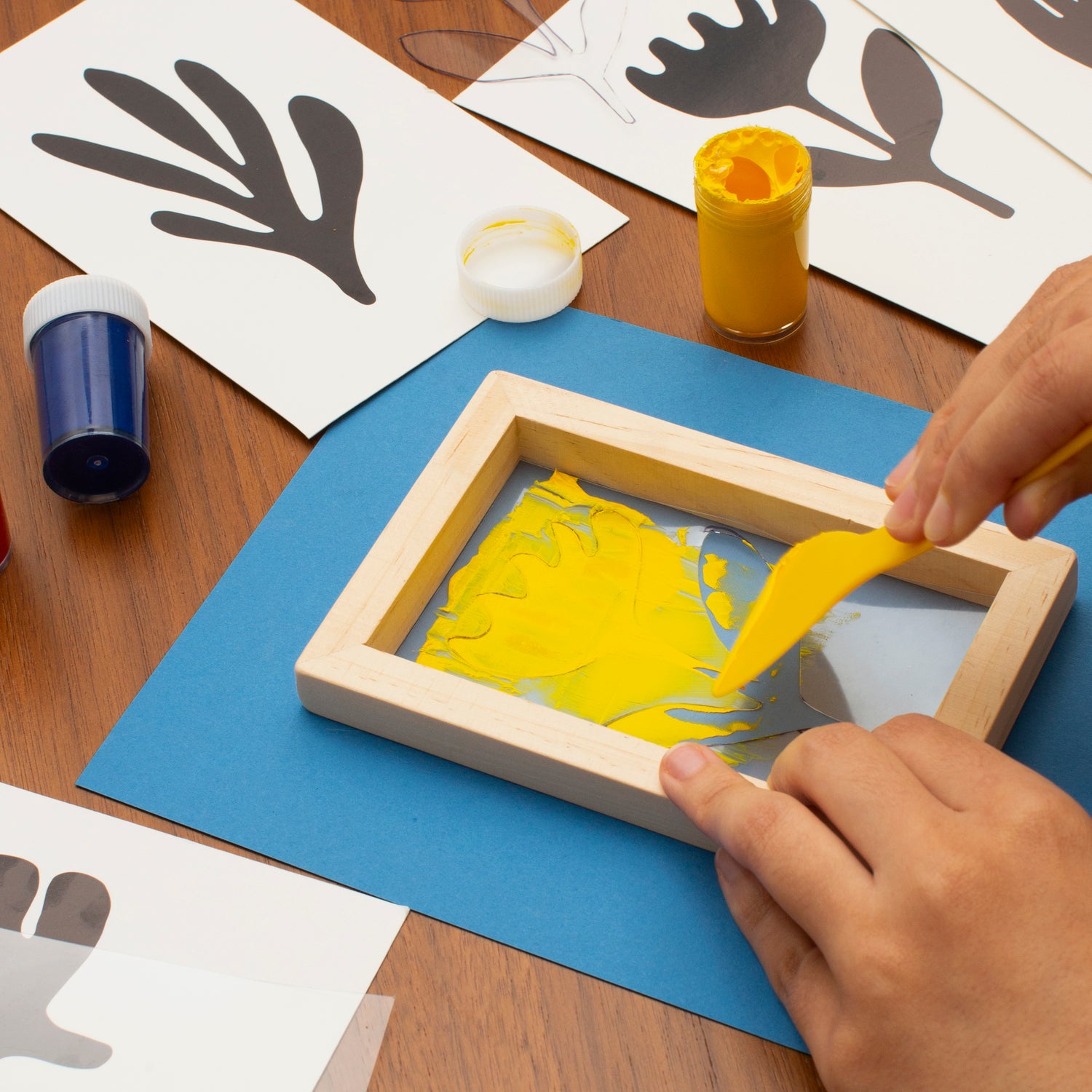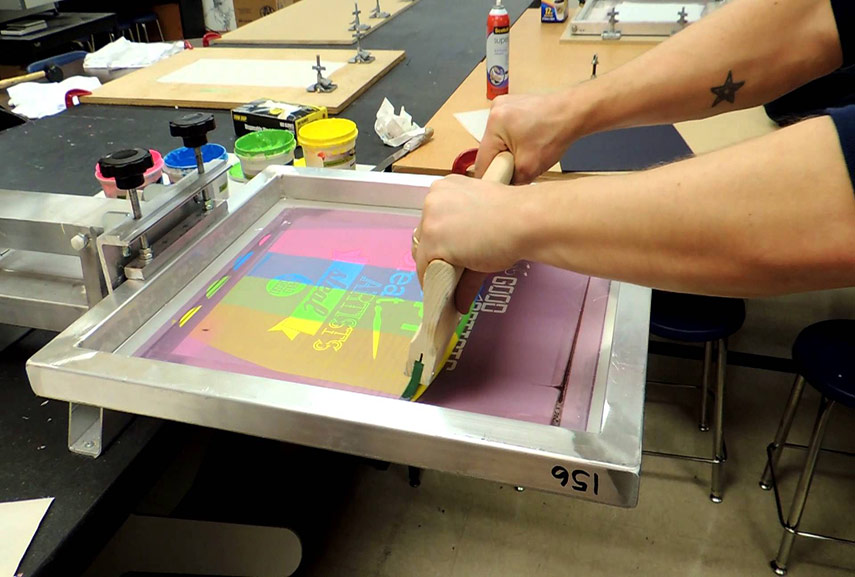ChatGPT said: Easy process to ordering with 10:9 Design Abilene
Wiki Article
The Important Overview to Recognizing Screen Printing and Its Versatile Utilizes
Screen printing has a rich background that dates back to old times, developing into an advanced technique used across different markets today. This overview explores the ins and outs of the screen printing process, describing its applications in style, home, and advertising and marketing décor - 10:9 Design Company. Comprehending these basics can open innovative potential for both industrial and artistic projects. The adhering to sections will certainly disclose necessary ideas and strategies to boost one's screen printing endeavorsThe Background of Screen Printing
Screen printing has origins that map back centuries, its advancement reflects the artistic and technical developments of numerous cultures. Coming from old China, the strategy was originally utilized for embellishing textiles and later infect Japan, where it became essential to Ukiyo-e woodblock printing. The method shifted to Europe in the 18th century, where it acquired popularity amongst craftsmens and industrial printers. The development of photo emulsion in the 20th century transformed screen printing, permitting more elaborate layouts and greater performance. Artists like Andy Warhol further drove its appeal, making use of the tool to produce legendary jobs that blended commercialism and art. By the late 20th century, screen printing had actually developed itself as a functional technique, utilized in vogue, advertising and marketing, and art. Today, it remains to progress, incorporating digital innovation and broadening its applications throughout different markets.The Screen Printing Refine Explained
Screen printing changes imaginative visions into tangible designs with a collection of specific actions. A photo is created and after that transferred onto a screen, normally made of fine mesh fabric extended over a framework. A light-sensitive solution is related to the screen, which is revealed to light, hardening in areas not covered by the photo. After rinsing the unhardened emulsion, a stencil is formed.Next off, the screen is put over the substratum, whether it be fabric, paper, or one more material. Ink is then pressed via the open locations of the pattern using a squeegee, transferring the layout onto the substrate listed below. This process can be repeated for multiple colors, needing different displays for each and every tone. Finally, the published thing is cured utilizing warm to ensure the ink adheres appropriately, leading to a long lasting, vivid layout all set for usage.
Sorts Of Screen Printing Techniques
In addition, specialty strategies, such as discharge screen printing, get rid of color from the fabric to create softer prints, while foil screen printing applies metallic aluminum foil to 10:9 Design contact achieve a shiny finish (10:9 Design near me). Each strategy supplies distinctive attributes, catering to numerous imaginative demands and manufacturing ranges, inevitably increasing the opportunities within the screen printing domain name
Applications of Screen Printing in Different Industries

In addition, the signage and advertising markets utilize screen printing for developing captivating screens and banners. This technique permits vibrant shades and complex styles that capture attention. In electronic devices, screen printing is used for using conductive inks to circuit card, vital for element connections. Moreover, the home design industry welcomes screen printing to create unique designs on fabrics and wall art. Generally, screen printing acts as an essential device across diverse areas, enhancing items with customized and visually appealing graphics.
Tips for Effective Screen Printing Projects
While embarking on a screen printing project, careful focus to information can significantly enhance the last outcome. Choosing high-grade materials is crucial; this includes the screen, inks, and substratums. Using ideal mesh counts can impact ink deposition and information resolution. Preparation is similarly important; detailed cleaning of displays and correct exposure times assure crisp prints.Next, precise enrollment is crucial for multi-color prints. Making use of alignment tools can aid attain exact layering. Additionally, testing prints on scrap products prior to production aids identify prospective concerns without squandering resources.

Often Asked Inquiries
What Materials Are Ideal for Screen Printing on Material?
Cotton and polyester blends are ideal for screen printing on textile due to their longevity and ink absorption. Furthermore, specialized fabrics like silk or canvas can generate unique appearances and finishes, improving the total style top quality.Exactly how Do I Tidy and Maintain Screen Printing Tools?
To clean and preserve screen printing tools, one must on a regular basis clean displays with appropriate solvents, evaluate squeegees for wear, lube relocating components, and store all products in a completely dry, dust-free environment to extend their life-span.What Are the Environmental Effects of Screen Printing?
Screen printing can have substantial environmental impacts, including chemical waste from solvents and inks, water use during cleansing procedures, and power usage. Lasting practices and environment-friendly products are important for decreasing these adverse impacts.Can Screen Printing Be Done in your home Properly?
Screen printing can be effectively done at home with the right materials and techniques. Hobbyists can produce high quality prints, though success depends upon their ability degree, tools, and understanding of the procedure included.
What Are the Expenses Related To Beginning a Display Printing Service?

Starting a screen printing company includes costs for tools, products, and work area. Initial expenses commonly vary from a few hundred to several thousand bucks, depending on the scale, top quality of machinery, and wanted manufacturing capacity.
Screen printing has a rich background that dates back to ancient times, evolving right into an advanced technique made use of throughout various sectors today. One more technique, rotating screen printing, employs cylindrical displays, promoting constant printing on fabric rolls, therefore improving efficiency for massive productions. In addition, specialty strategies, such as discharge screen printing, get rid of color from the fabric to develop softer prints, while foil screen printing uses metallic foil to achieve a shiny coating. In the fashion field, screen printing is commonly made use of to produce vivid styles on garments, enabling brand names to showcase their special designs. Cotton and polyester blends are suitable for screen printing on fabric due to their resilience and ink absorption.
Report this wiki page